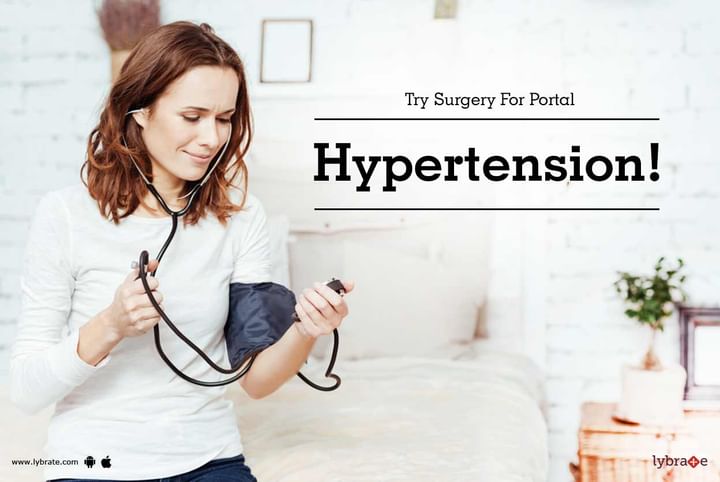Try Surgery For Portal Hypertension!
There are veins which carry blood from the various digestive organs to the liver. When there is an obstruction in the free flow of blood in the liver, it increases the pressure and is known as portal hypertension. This increased blood pressure stresses the blood vessels in the esophagus, stomach, and other digestive organs and results in internal bleeding.
What causes portal hypertension?
Cirrhosis is the most common cause of portal hypertension. The cirrhosis could be a result of excessive consumption of alcohol, chronic hepatitis, or thrombosis in the liver vessels. Blood clots in the portal vein are schistosomiasis ( a parasitic infection) are some other causes of portal hypertension. It is also important to know that in some cases, the causes of this condition remain unknown.
What are the symptoms?
Although, the symptoms of portal hypertension may not be very evident until you identify that there is some damage in the liver. the chances of developing a portal hypertension are increased if you suffer from a liver disease.
- Ascites, which is fluid accumulation in the abdominal cavity
- Bleeding in the abdominal vessels
- Blood in the stools and/or vomitus (black tarry stools or blood in the vomitus)
- Reduced platelet count
- Encephalopathy, fluid accumulation in the brain, which can lead to confusion and other issues
How can it be managed?
Once diagnosed, treatment of portal hypertension is at two levels.
At the first level, dietary and lifestyle changes and medical treatment should suffice.
- Alcohol, a street drug, and tobacco use should be completely stopped. Sodium and protein intake should be reduced.
- Avoid taking any over-the-counter medications without consulting a medical personnel.
- Have a good, balanced nutrition
- Medications like propranolol are given to control blood pressure
- Medications are also given to prevent internal bleeding
- If there is encephalopathy, then lactulose is given to clear confusion
- The ends of the bleeding vessels are tied and cut off (ligated) endoscopically, and this is known as sclerotherapy. Alternately, bands may be applied to the cut vessels to prevent further bleeding. This is known as banding.
If this first line does not work, then the next level of interventional therapy is initiated.
- TIPS, which is a transjugular intrahepatic portosystemic shunt, which is a shunt that is placed into the liver to reduce pressure.
- Distal splenorenal shunt (DRSR) is when a shunt or link is created between the splenic vein and the left kidney vein. This also helps control variceal pressure and bleeding.
- Both these shunts are widely performed and require follow up once in 6 months to ensure they are performing well and without any blockages.
Other options:
- In cases where a shunt is not possible, then devascularization is done. This involves removal of the bleeding varices.
- The fluid in the abdomen may be removed surgically by paracentesis.
- As a last option, a liver transplant surgery may also be considered.
So, while portal hypertension definitely is a serious medical condition, there are different levels of treatment. The important thing is to alert yourself once any symptoms set in. Early intervention always ensures minimal intervention and good prognosis.
In case you have a concern or query you can always consult an expert & get answers to your questions!



+1.svg)
